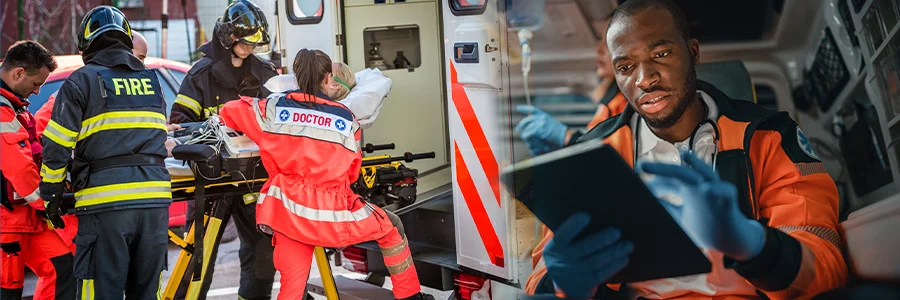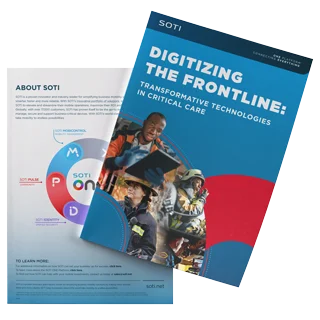
Emergency services around the world were asked a fundamental question: Does technology empower or hinder a first responder’s ability to provide critical care in moments of crisis? Digitizing the Frontline: Transformative Technologies in Critical Care shares the emergency services perspective. SOTI launched this important report on Thursday, April 25.
In the report, three key priorities regarding technology were identified, and according to the following sneak-peek statistics, the benefits of digital transformation in emergency services are evident. Unfortunately, the benefits have yet to be fully realized for many reasons.

Pen and Paper are Tough to Let Go
Despite tablets, smartphones and rugged devices being readily available to first responders, manual data collection is still prevalent. Globally, 97% of first responders rely on pen-and-paper methods most of the time to perform tasks.
There are some known risks associated with pen and paper: Information can get lost, outdated or impacted by human error. It is also more difficult to share paper files with team members spread across multiple locations.
What other risks are associated with a lack of digitization?
Get the answers in Digitizing the Frontline.
Not Enough Devices to Go Around
Although organizations are investing in technology, it’s not happening quickly enough or at a large enough scale. Because of this, 20% of first responders globally say there are not enough devices to go around their team or department. Three-quarters of these first responders experience this issue at least once a week.
Too many first responders are relying on personal devices, which reveals another issue: unmanaged devices are susceptible to software vulnerabilities, security threats and data theft.
How are emergency organizations mitigating device shortfalls?
Download Digitizing the Frontline to find out.
Device Downtime at the Worst Possible Moment
When first responders arrive at the scene, they must trust their devices and apps to perform as expected. Currently, that’s not happening, as 92% of emergency workers report mobile device issues at least once per week.
Here’s what happens when first responders experience device downtime:
- Interrupted communication with a command center, preventing police services from requesting backup.
- Losing touch with a colleague or their location during a search and rescue operation.
- Delays in receiving critical information in a timely manner.
Device downtime is compounded by the time and resources required to resolve the issue. Every minute lost delays response and recovery efforts.
Discover the biggest causes of device downtime and the mental and emotional impact to first responders in Digitizing the Frontline.
Get Your Free Copy of Digitizing the Frontline: Transformative Technologies in Critical Care
This emergency services report is the first report of its kind for SOTI. Interviews were conducted with numerous types of first responders, including: ambulance, police, fire and search and rescue services.
Gain valuable insights from individuals responsible for being first on the scene, assessing the situation and providing immediate assistance. Learn how they rely on technology to better protect and provide critical care.
This report is a must-read for IT administrators, decision makers and anyone tasked with supporting first responders with the technology they need to perform their jobs under the most challenging situations.



